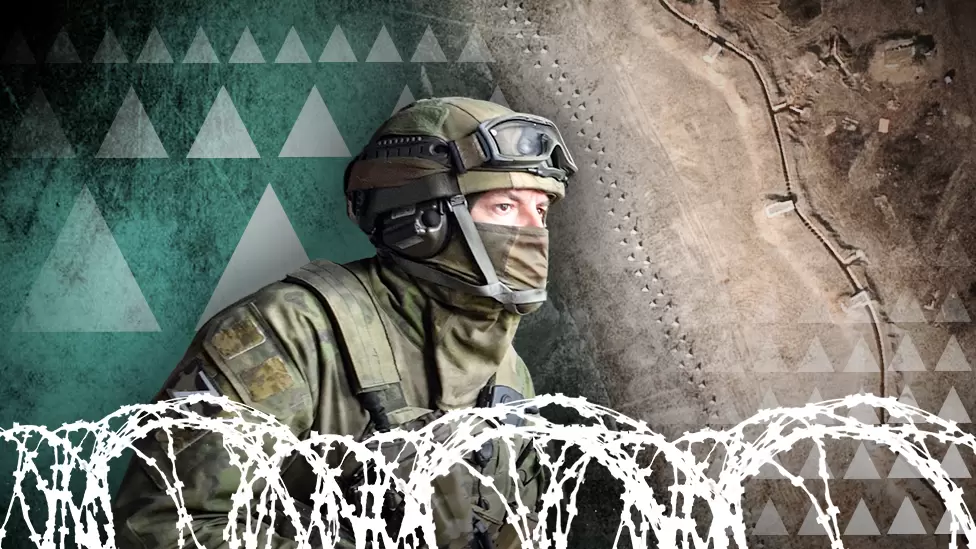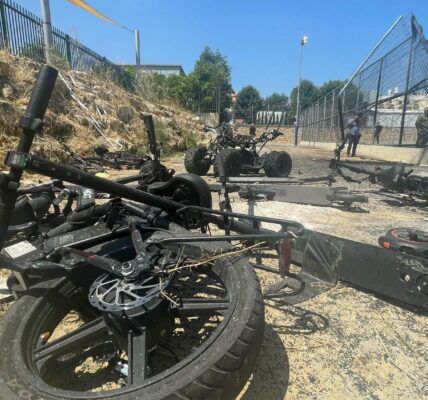Ukraine on the Brink of Escalation as U.S. Eases Restrictions on Long-Range Strikes Against Russia
A dramatic escalation in the Ukraine war may be imminent, but this time it’s Kyiv, not Moscow, poised to strike deep into enemy territory. Ukraine has long requested the ability to hit targets within Russia using its Western-supplied long-range missiles, and recent signals from Washington suggest that the U.S. is ready to permit just that. This potential shift in strategy could drastically alter the war’s trajectory, drawing new red lines and raising the stakes in an already volatile conflict.
U.S. and U.K. Indicate Policy Shift on Long-Range Strikes
The clearest indication of a change in policy came during a visit by U.S. Secretary of State Antony Blinken and British Foreign Secretary David Lamy to Kyiv, where they met with Ukrainian President Volodymyr Zelensky. Blinken hinted at a new, more aggressive stance, saying, “We have adjusted and adapted as the battlefield has changed.” This statement has been widely interpreted as a potential green light for Ukraine to use Western long-range weapons to strike inside Russian territory.
This move marks a significant departure from the U.S.’s previous reluctance to approve long-range missile attacks on Russia, a decision rooted in fears of provoking wider conflict. Now, it appears that Kyiv may soon have the freedom to launch the deep strikes it believes could cripple Russia’s war machine.
Ukraine’s Long-Range Strike Capabilities
Ukraine already possesses two key long-range missile systems: the Anglo-French Storm Shadow and the American ATACMS. Both have the capacity to hit targets up to 300 kilometers (190 miles) away, allowing Ukraine to target key Russian military infrastructure like airbases, ammunition depots, and logistical hubs far behind the front lines.
If Ukraine is allowed to use these missiles inside Russian territory, it could deliver a crippling blow to Moscow’s military capabilities. Ukrainian officials believe that long-range strikes could weaken Russia’s ability to wage war and potentially shorten the conflict.
President Zelensky has been adamant about the need to lift restrictions on Ukraine’s use of these weapons. “All restrictions on using American and British weapons against legitimate military targets on Russian soil must be lifted,” Zelensky said. His government views long-range strikes as essential to defending Ukraine’s sovereignty and pushing Russian forces back.
U.S. Reluctance Fading Amid Growing Pressure
The U.S. has been cautious about allowing Ukraine to escalate the conflict by striking deep into Russia, but growing pressure from European allies is changing the calculus. With Russian forces making gains in eastern Ukraine, especially around the key city of Pokrovsk, Kyiv’s needs are becoming more urgent. The threat of Russian advances toward the Donbass region, coupled with Ukraine’s stretched resources, has led its Western partners to reconsider their stance on advanced weaponry.
If Ukraine is permitted to conduct long-range strikes, it could disrupt Russian military logistics and supply lines, potentially stalling the advances of Russian troops. In this context, European nations like the U.K. and France have been pushing for more robust support, and the U.S. is now more aligned with that position.
Iran’s Growing Involvement Adds a Layer of Complexity
Complicating the situation is the increasing military support that Russia has received from Iran. Western intelligence agencies have confirmed that Iran has supplied Russia with short-range ballistic missiles, including the Fateh-360, which are expected to be deployed against Ukraine in the coming weeks. This influx of missiles could intensify the war, providing Russia with a renewed capability to strike Ukrainian targets.
The U.S. and its allies have responded with sanctions on Iran, but their effectiveness remains questionable. Ukrainian officials fear that Russia’s use of these new missiles could lead to increased casualties and destruction, further escalating the conflict.
Kremlin’s Warnings and the Nuclear Threat
Russia has made it clear that any Ukrainian strikes on Russian soil will be seen as a direct attack by the West. President Vladimir Putin has repeatedly drawn red lines, warning that crossing into Russian territory could provoke severe retaliation. Most concerning is the threat of nuclear escalation. Putin has issued veiled nuclear threats before, and his government has consistently warned of catastrophic consequences if Western-supplied missiles are used to attack Russia.
Foreign Minister Sergei Lavrov recently accused the West of stoking the conflict and dismissed the notion that it seeks to avoid escalation. “This is an attempt to deceive,” Lavrov said. “The West is not avoiding escalation—they are provoking it.”
While some Western officials, like CIA Director Bill Burns, have downplayed these threats, calling Putin’s warnings “saber-rattling,” the risk remains real. Any Ukrainian strike on Russian territory could provoke an unpredictable response from Moscow, heightening the danger of a broader conflict.
Risk of Wider War Looms
If Ukraine goes ahead with long-range strikes inside Russia, the conflict could quickly expand beyond Ukraine’s borders. Russia could retaliate not just against Ukraine, but potentially against NATO countries, drawing the West directly into the conflict. This escalation could turn the Ukraine war into a broader regional or even global conflict, with severe consequences for international security.
Western leaders are carefully weighing the risks of escalating the conflict. While long-range strikes could help Ukraine defend its territory and regain lost ground, they could also trigger a dangerous spiral of escalation that might pull more nations into the war.
Conclusion
The Ukraine war may soon reach a pivotal turning point as the U.S. and its allies signal their readiness to allow Kyiv to launch long-range missile strikes on Russian territory. This shift in strategy could bring the conflict to a new, more dangerous phase, with the potential to draw in more countries and raise the stakes dramatically. As both sides prepare for what could be a decisive escalation, the risk of miscalculation and broader war looms larger than ever. The world watches, bracing for the next move in this volatile and unpredictable conflict.






